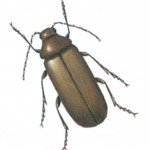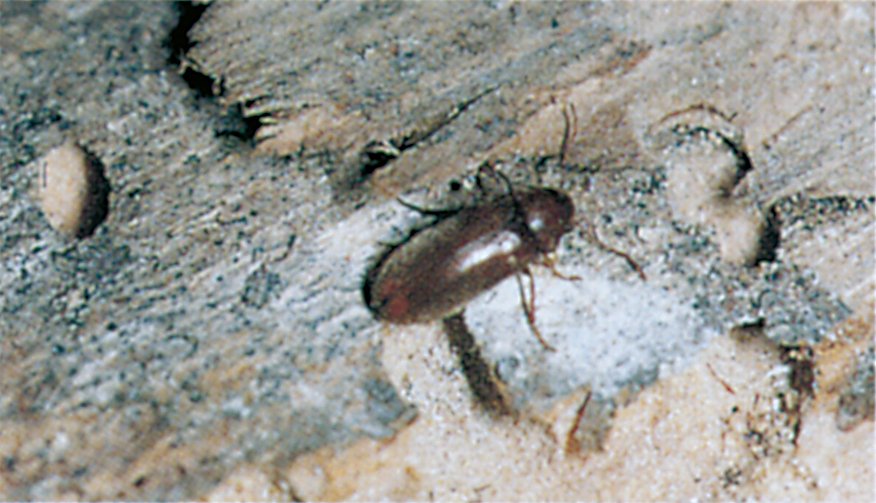Latin: Ernobius mollis

In this species the exoskeleton is softer than in the other furniture beetles. A clothing of short, fine hairs gives the beetles a pale, golden-brown colour. The life cycle is very similar to that of the common furniture beetle but the female only lays eggs in the bark of fallen or dead conifers. The newly hatched larvae gnaw their way into the growth layer and feed partly on the innermost layer of bark, partly on the outermost zone of sapwood. If the bark is removed the larval tunnels can be seen as furrows (c. 1 mm deep) in the wood.
Just before pupating the larvae gnaw a little deeper and at right angles to the ordinary larval tunnels (p. 114).

This beetle is very common and can be found practically everywhere that timber with the bark still on is used in house construction. The damage done is purely superficial and will not affect the mechanical strength. On the other hand, if such timber is covered with sheets of any kind the emerging beetles will gnaw their way out and leave unsightly holes. The position is more serious when the timber is covered directly with roofing felt or lead sheets. The beetles will then gnaw through the roof covering and their exit-holes will allow the entry of rain, thus supplying a substrate for the growth of moulds.




